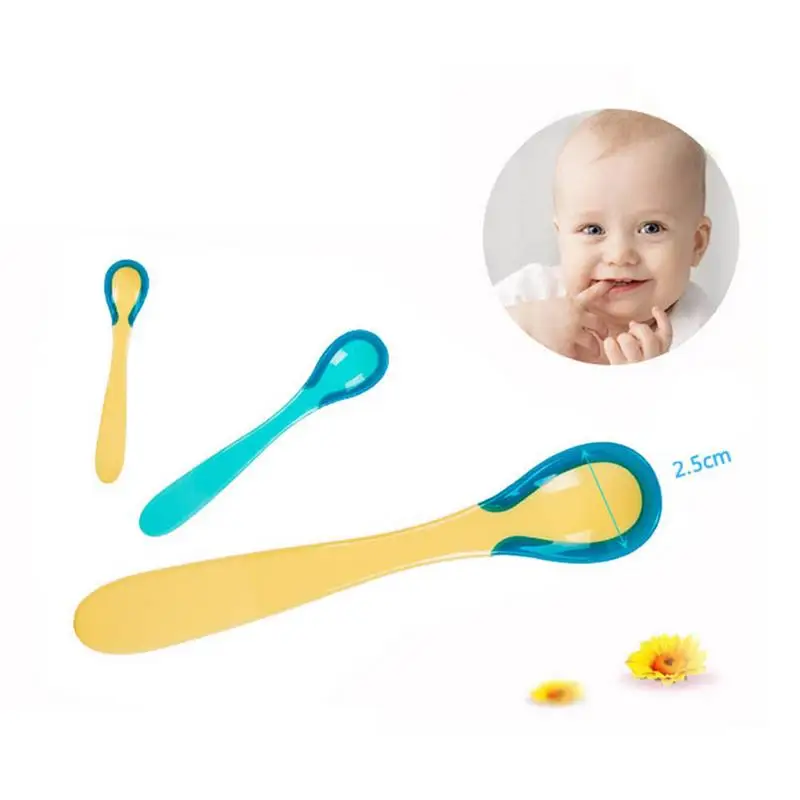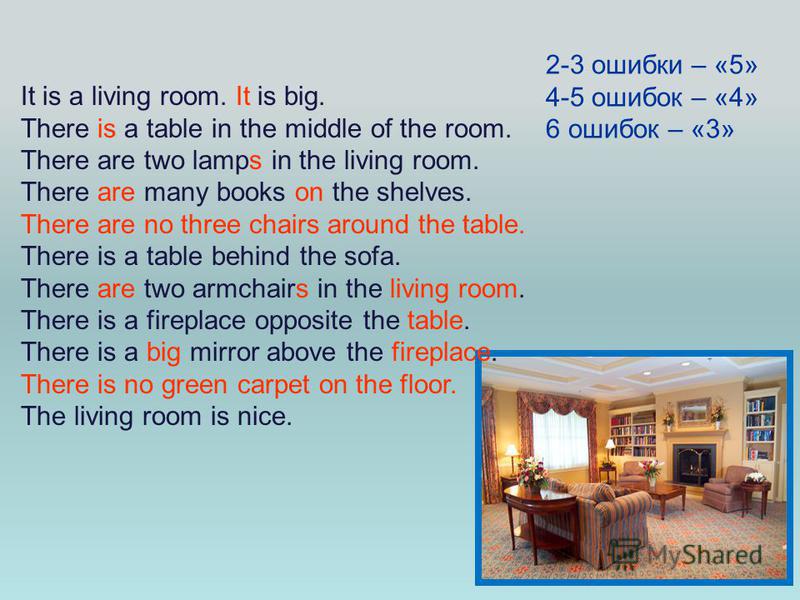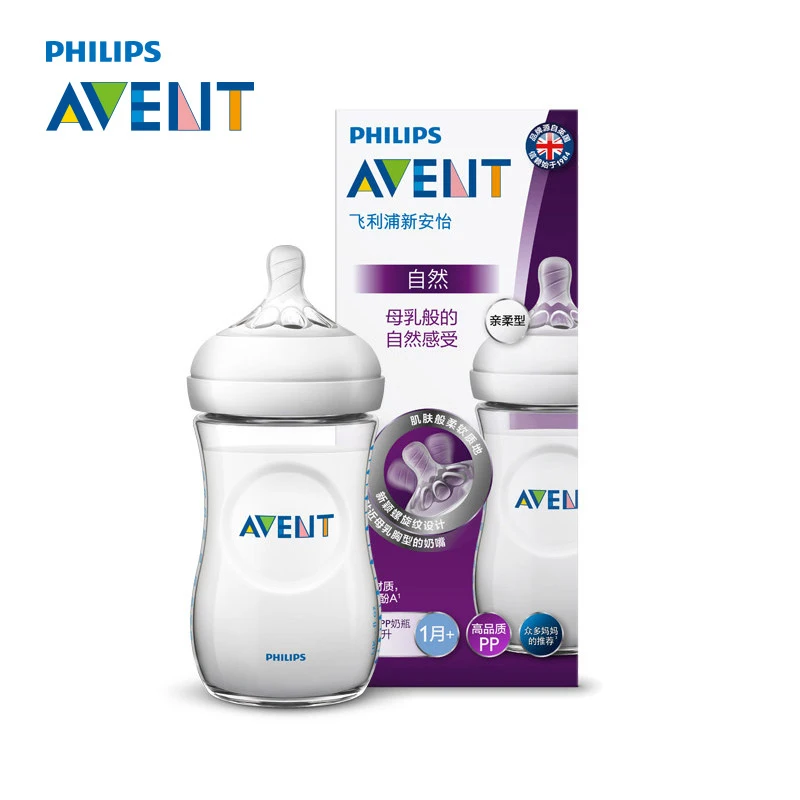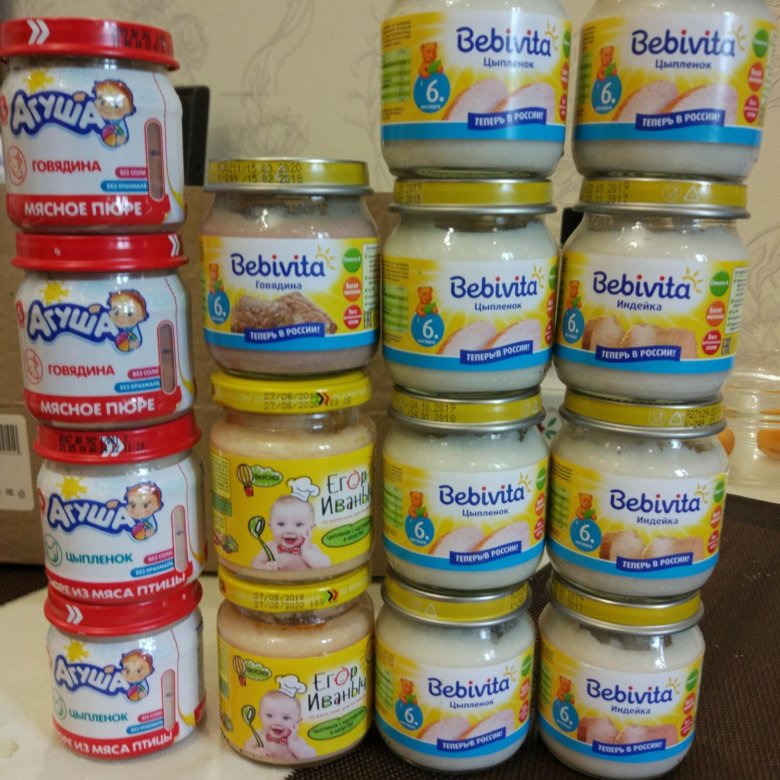Bambu baby feeding spoons
Organic Baby Feeding Spoons | bambu®
$11.35
| /
Quantity
- Description
- Shipping
- Care
Made from USDA certified organic bamboo, these baby feeding spoons are a healthy alternative to plastic. Perfect for parents looking for all-natural alternatives for their little one.
We designed our organic baby spoons with both parents and babies in mind. The handle is designed to be large enough for parents’ hands and the spoon end is made small enough for your child’s mouth. We recommend using this baby feeding spoon for children six month or older.
- Size: 6.5"
- Sold as a set of 2 baby feeding spoons
- USDA certified organic
- Made without glues or lacquers
- Finished with a USDA organic oil from the flax seed
- Food safe; phthalate-free and BPA-free
- Tested and approved; meets US code CFR Title 16
- Hand wash with warm soapy water and rinse thoroughly
- For ages 6 months+
- Item #055993
It is wise to take extra precautions with products intended for children. We recommend the following:
- Always use with adult supervision
- Never leave the child unattended while using this product
- Throw away at first signs of damage or weakness
- Wash thoroughly before each use
- Hand wash with warm soapy water and rinse thoroughly
- Not recommended for dishwasher or prolonged soaking
- Not recommended for microwave
- NOTE: This baby feeding spoon is not intended as a teething device
View product
Shipping Information:
We ship Monday through Friday from Salt Lake City, Utah. We do our very best to ship within 2 business days of receiving your order, and orders placed before 11 am Pacific Time may ship same day. Because orders can be processed so quickly, we may not be able to cancel an order before shipping. If you need to cancel an order, please call us at 855-630-3149 or email [email protected].
The shipping rate charged for the shipping of your order is based on the weight of your products, and your location.
At this time, we ship to US addresses only.
bambu is pleased to offer Free Standard Ground Shipping* on orders over $95.00. Orders will ship via FedEx Ground and must ship to a physical address (no PO Boxes). Fed Ex Ground typically delivers within 3-6 business days. depending on your location. If your order is time sensitive, please call us toll-free at 855-630-3149 to discuss your options.
*Please note that orders shipping to Hawaii or Alaska are excluded from our Free Ground Shipping offer. Shipping via USPS 1st Class to Alaska or Hawaii may take several weeks - we suggest you use Priority Mail for a more timely arrival. Offer also not valid for orders shipping beyond the contiguous United States.
CarbonFree Shipping:
From our source to your door, all shipping is carbon free. bambu customers can feel good that their order arrives without creating any additional carbon emissions.
That’s because bambu® is a Carbonfree® business.
Through a partnership with Carbonfund.org, bambu offsets 72 metric tons of greenhouse gas emissions; the equivalent of 79,661 pounds of coal burned, or 8,102 gallons of gas consumed.
Renewable plant-based products and carbon free shipping are reducing the load on the environment.
To learn more visit https://bambu.eco/carbonfree.
Expedited Shipping:
Please do not choose Priority Mail if your order is time sensitive. USPS does not guarantee delivery in the time quoted, and is not recommended for urgent orders.
If you have an urgent need to receive items for an event, we recommend you call us prior to placing your order to inquire about shipping options. We'd be happy to check shipping times to ensure your order is received in time for your event. Customer Care can be reached at 855-630-3149, and we are available from 8 am to 4 pm (Pacific time) Monday through Friday.
**Due to unforeseen weather conditions or peak volume times, FedEx, UPS and USPS may experience unavoidable delays in package delivery.![]() We are not responsible for delays in the UPS or USPS delivery networks. While we make every attempt to ship your order in a timely manner, we do not have control over the final delivery date of your package.
We are not responsible for delays in the UPS or USPS delivery networks. While we make every attempt to ship your order in a timely manner, we do not have control over the final delivery date of your package.
Return Policy:
Please see our Returns and Refunds Policy for details.
When properly cared for, your bamboo kitchen utensils can last for years to come (in fact, our founders have a set that has been in use since 2003). Follow these tips for best results:
- Hand wash in hot, soapy water, then wipe dry
- Revive the natural shine of your bamboo utensils with an all-natural oil
- Smooth away any signs of wear by lightly sanding your utensils with a fine grain sandpaper
- Not recommended for dishwasher or prolonged soaking
- Not recommended for use in the microwave
We recommend using Bambu Finishing Oil to care for your bamboo. For more care and cleaning information, read our Bamboo Utensil Care 101 blog post.![]()
Want to know just how long your bamboo utensils can last? Read this.
View product
has a rating of 4.8 stars based on 17 reviews.
Amazon.com: Avanchy Bamboo Baby Spoons Set - Bamboo and Silicone Baby Spoons - Rainbow Mega Gift Set
4.7 out of 5 stars 788 ratings
| Price: | $20.99$20.99 ($20.99$20.99 / Count) |
Color: Green, Blue, Orange, Yellow, Magenta
| Color | Green, Blue, Orange, Yellow, Magenta |
| Brand | Avanchy |
| Style | Modern |
| Item Dimensions LxWxH | 5. 5 x 0.05 x 2 inches 5 x 0.05 x 2 inches |
| Item Weight | 0.04 Pounds |
Shop products from small business brands sold in Amazon’s store. Discover more about the small businesses partnering with Amazon and Amazon’s commitment to empowering them.
Learn more
Small Business
This product is from a small business brand. Support small. Learn more
Easy to hold
4.9 4.9
Durability
4.7 4.7
Easy to clean
4.7 4.7
Easy to use
4.5 4.5
See all reviews
Note: Products with electrical plugs are designed for use in the US. Outlets and voltage differ internationally and this product may require an adapter or converter for use in your destination. Please check compatibility before purchasing.
Silicone spoon "Bamboo" - Rose Powder
Care of the silicone product
Before the first use, we recommend that you wash the silicone product thoroughly by hand using child-safe soap and rinse thoroughly with water to remove soap suds. After you have washed the product, let it dry completely naturally or dry it with a soft, clean cloth. Silicone is resistant to temperature fluctuations. Therefore, the silicone product can be sterilized with hot or boiling water (avoiding the plastic clamp). You can also place the product in the refrigerator or freezer for 5-10 minutes before use to provide additional relief from gum disease. To keep your silicone product clean outdoors, we recommend using antibacterial baby wipes.
After you have washed the product, let it dry completely naturally or dry it with a soft, clean cloth. Silicone is resistant to temperature fluctuations. Therefore, the silicone product can be sterilized with hot or boiling water (avoiding the plastic clamp). You can also place the product in the refrigerator or freezer for 5-10 minutes before use to provide additional relief from gum disease. To keep your silicone product clean outdoors, we recommend using antibacterial baby wipes.
Caring for wood and silicone
Products that contain a combination of wood and silicone require gentle care. We recommend not soaking, boiling or sterilizing the product. Wipe the product with a clean cloth or hand wash with warm soapy water, then wipe dry immediately. Do not wash the product in a washing machine or dishwasher, as there is a risk that it will get stuck.
Caring for wood products
We use beech and juniper in our products. Both species are hardwoods that are chemical free and impact resistant. We recommend wiping wood products with a damp cloth or washing with warm soapy water. After that, the product must be dried very carefully with a lint-free cloth. Wooden products must not be immersed in water. Also, do not boil, sterilize and freeze. This will cause cracks in the wood beads. Wood products are sensitive to high temperature changes. Please note that only dirt should be wiped on the surface of the wooden clip. Our products made of natural wood you receive not treated with oil in order to prevent allergies. Wood products can be treated with oil yourself, and for this we recommend using natural linseed oil so that the wooden parts do not get tired and are in good condition for a long time. If the surface of the product becomes rough, we recommend smoothing it with fine sandpaper and then using a damp sponge to remove the sanding.
We recommend wiping wood products with a damp cloth or washing with warm soapy water. After that, the product must be dried very carefully with a lint-free cloth. Wooden products must not be immersed in water. Also, do not boil, sterilize and freeze. This will cause cracks in the wood beads. Wood products are sensitive to high temperature changes. Please note that only dirt should be wiped on the surface of the wooden clip. Our products made of natural wood you receive not treated with oil in order to prevent allergies. Wood products can be treated with oil yourself, and for this we recommend using natural linseed oil so that the wooden parts do not get tired and are in good condition for a long time. If the surface of the product becomes rough, we recommend smoothing it with fine sandpaper and then using a damp sponge to remove the sanding.
Muslin handkerchief care instructions
• Prewash required!
• Remove the handkerchief from the silicone teether before washing.
• Gentle machine wash at 30 degrees
• Iron on low temperature
• Do not bleach
• Do not dry clean
Handkerchief gets softer and softer with every wash.
Blankets
• Machine wash at 30º
• Do not bleach
• Flat or tumble dry
• Dry clean
• Do not iron
Headbands and headbands
Clean stains ONLY.
Please note that small children must always be supervised by an adult while wearing our products. We do our best to ensure all parts are secure, but please double check the product before use.
Wool toys
Dry clean only. Can't be washed.
Pins
The pin is not a toy!
Keep children away from the product as it contains small and sharp parts.
Montessori Ball
Hand wash with mild detergent. Do not machine wash!
ATTENTION!
For the safety and health of your child:
Attention!
Our product is not a toy! Before each use, carefully check the beads, cord and clip. At the first sign of defects or damage, discontinue use immediately. Use the product responsibly. Never leave children unattended with any type of teethers. Small parts can cause choking. Products should not be used while sleeping. Never fasten the product to belts, straps or loose clothing as the child may suffocate.
At the first sign of defects or damage, discontinue use immediately. Use the product responsibly. Never leave children unattended with any type of teethers. Small parts can cause choking. Products should not be used while sleeping. Never fasten the product to belts, straps or loose clothing as the child may suffocate.
paediatrician checklist for parents - article on TSK
Like most children's appliances, baby utensils should first and foremost make life easier for parents. It is much more reasonable, for example, to buy a plastic plate than to collect glass fragments from the floor several times a day. And it’s safer to give a plastic mug to a child so as not to run after him, insuring family china.
And yet, in this matter, as in everything else, you should know the measure: do not buy too much and do not delay the transition to the usual "adult" plates and cutlery. Pediatrician Ekaterina Volkova spoke about the basic rules for using children's dishes.
Benefits of special baby dishes
- Safety.
 Smooth shapes and the absence of sharp elements will protect the child from accidental injuries, and unbreakable material will allow you not to worry about the fact that the baby will drop the dishes and get hurt by splinters.
Smooth shapes and the absence of sharp elements will protect the child from accidental injuries, and unbreakable material will allow you not to worry about the fact that the baby will drop the dishes and get hurt by splinters. - Hygienic. The child in the first years of life should have separate dishes. If you choose a special children's kit, it will be easy to track that only the baby uses it.
- Convenience. Children's tableware is light and unpretentious in use, you can easily take it with you, for example, for a walk. Many models are as ergonomic as possible and are equipped with details that facilitate the feeding process (suction cups, valves and non-spill pockets, rubberized handles, non-slip bottom, temperature indicator).
- Design. Bright colors, favorite characters from fairy tales and cartoons will definitely attract the attention of the child. With such dishes, it will be easier to seat him at the table and persuade him to finish eating soup or porridge in order to get to the picture at the bottom.

Pros and cons of different materials for baby dishes
Plastic is the most common material. It is lightweight, impact resistant and inexpensive. Plastic utensils can have a variety of shapes and colors, perform any task. It is important to carefully study the label - not every plate or plastic mug can be put in the microwave and washed in the dishwasher. In this case, it is better to take dishes from trusted world brands. They have certificates that guarantee that products during active use will not be damaged and will not emit harmful substances. The disadvantage of plastic utensils is that they are not environmentally friendly. Try to properly dispose of it after use or hand it over to collection points.
Silicone is a safe material from which many baby accessories are made: pacifiers, teethers, toys, dishes. He does not beat and almost does not give in to children's teeth, is not afraid of high temperatures and washing in the dishwasher. High-quality silicone does not emit harmful substances and does not react with food. The downside is that the dishes are quite thick. In addition, there is a risk of falling for unscrupulous manufacturers who use harmful dyes and chemicals. It is important to pay attention to the service life of silicone utensils and the rules for caring for them.
High-quality silicone does not emit harmful substances and does not react with food. The downside is that the dishes are quite thick. In addition, there is a risk of falling for unscrupulous manufacturers who use harmful dyes and chemicals. It is important to pay attention to the service life of silicone utensils and the rules for caring for them.
Bamboo is a lightweight and durable material. Bamboo tableware is beautiful and safe. However, the cymbal may not withstand a strong blow and still break. Another important point is that such dishes cannot be used in the microwave and it is better not to wash them in the dishwasher, as they can be deformed from prolonged contact with water.
glass and ceramic are safe in composition, but break easily and may injure a child. They are best used when the children grow up or when an adult is still feeding the baby himself, who does not have the opportunity to reach the plate. Pay attention: there should be no chips or cracks on the dishes. Say goodbye to broken plates without regret, and even more so do not give them to children: a tiny piece of glass or enamel can get into the esophagus and damage internal organs.
Say goodbye to broken plates without regret, and even more so do not give them to children: a tiny piece of glass or enamel can get into the esophagus and damage internal organs.
Metal is not the best option for children's dishes. It heats up quickly and cools down for a long time, the child can get burned. Leave metal bowls and cups for hiking.
Wood is a safe and environmentally friendly material, but not suitable for children's dishes: a dishwasher and a microwave are contraindicated for wood. In addition, over time, it will accumulate germs, dirt and harmful substances.
What dishes to buy for a baby: a checklist for parents
1. Spoon. She will be needed in 4-6 months for the introduction of complementary foods and for medication. The first is better to take a silicone spoon. It is not too deep, hypoallergenic and safe for baby's delicate gums. However, some mothers prefer silver or plastic - this is also quite acceptable if used carefully. However, you should not “flirt” with silicone and plastic spoons. It is better for a child to learn to eat on his own with metal appliances. Spoons can be a special small size, but the more they resemble real "adults", the better.
However, you should not “flirt” with silicone and plastic spoons. It is better for a child to learn to eat on his own with metal appliances. Spoons can be a special small size, but the more they resemble real "adults", the better.
2. Plug. Will come in handy closer to the year or to the moment when the child begins to actively learn to eat on his own. In addition to its direct purpose, it will also help develop coordination, manual dexterity and fine motor skills. Give preference to metal appliances with rounded teeth. They are easier to use, easier to clean, and more durable than plastic ones.
3. First plate. She appears after the spoon at the same time when the baby tries the first complementary foods. It is better to start with a small plate, since the portions are also small at first. Later, when the menu becomes diverse, two more plates will be needed - deep for the first courses and flatter for the second.
There are plates on sale with a rubberized base that prevents slipping on the table, which is convenient for a baby and an adult. The option when the bottom of the plate is attached to the countertop with a suction cup is not so straightforward. On the one hand, it securely fixes the plate, making it stable. On the other hand, in order to move such a plate, you will have to make an effort, and from a sudden movement, the contents can splash on the table and floor. However, this option is good when you need to give your child chopped fruits or berries, that is, something that is convenient to eat with your hands.
4. Non-spill cup. This is the bottle-to-cup transition where the baby is trying to drink a liquid that flows freely (as opposed to a breast or a bottle with a nipple that must be sucked on to get the contents). Someone needs it for 2-3 months. Some have been using it for a year or more.
The cup usually has two handles, so it is convenient for the baby to get used to drinking on his own. The main difference between a drinking bowl and a mug is that it has a lid, thanks to which the liquid will not spill. The lid can be with a straw, with a silicone or plastic spout, with interchangeable nozzles. The choice is yours, or rather, your child's. Most often, you have to buy several options so that the baby can choose the one that suits him best. Remember: the more complex the design of the drinker, the more difficult it is to wash it well. Some parents skip the sippy stage and go straight to the regular cup.
5. Cup. Her turn will come after the drinker (or instead). Someone masters the cup as early as 8–10 months, someone closer to 1.5 years. In any case, the cup must meet two main criteria - to be comfortable and safe. She can have two handles or one, 100–150 ml is enough in volume so that it is not difficult and convenient for a child to hold her. By kindergarten age, as a rule, the baby calmly copes with small ceramic cups and glasses.
Seven golden rules for caring for children's dishes
- Wash immediately after meals to prevent bacterial growth.
- Dry upside down and do not put wet dishes in the cupboard, otherwise there is a risk that residual water will rot or also become a source of bacteria.











